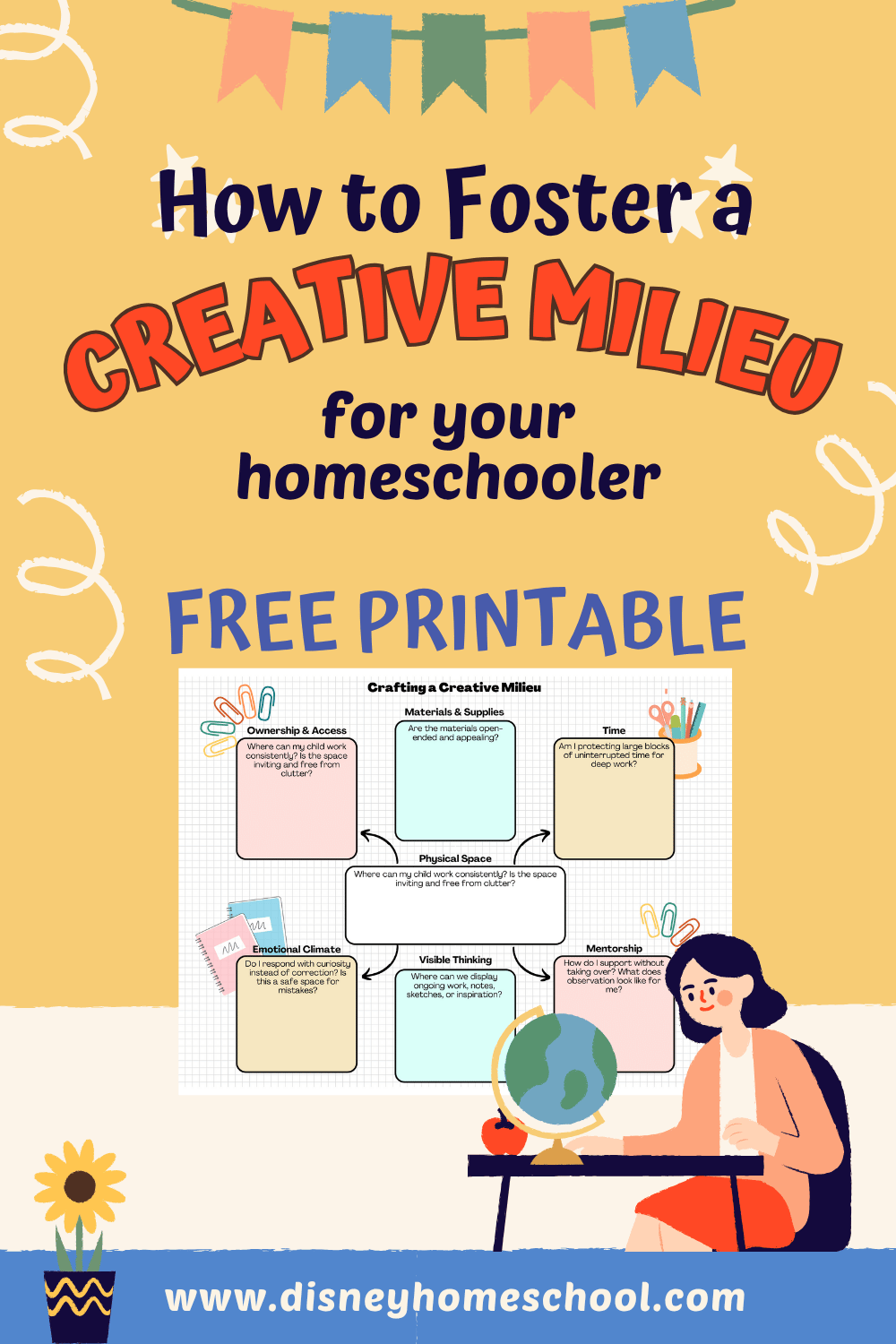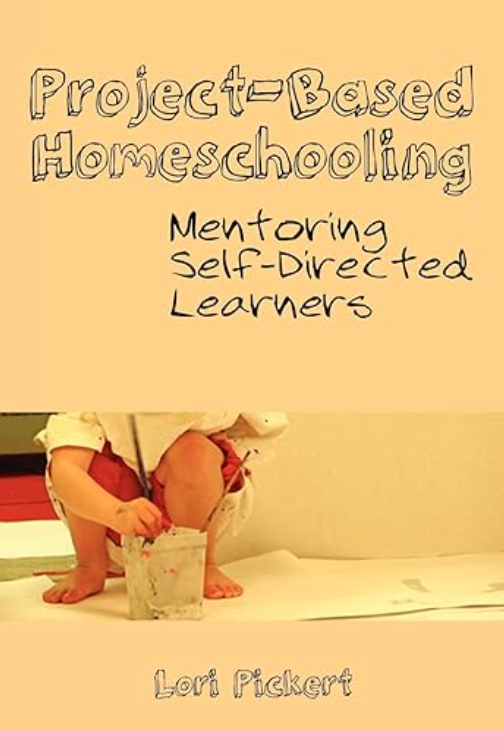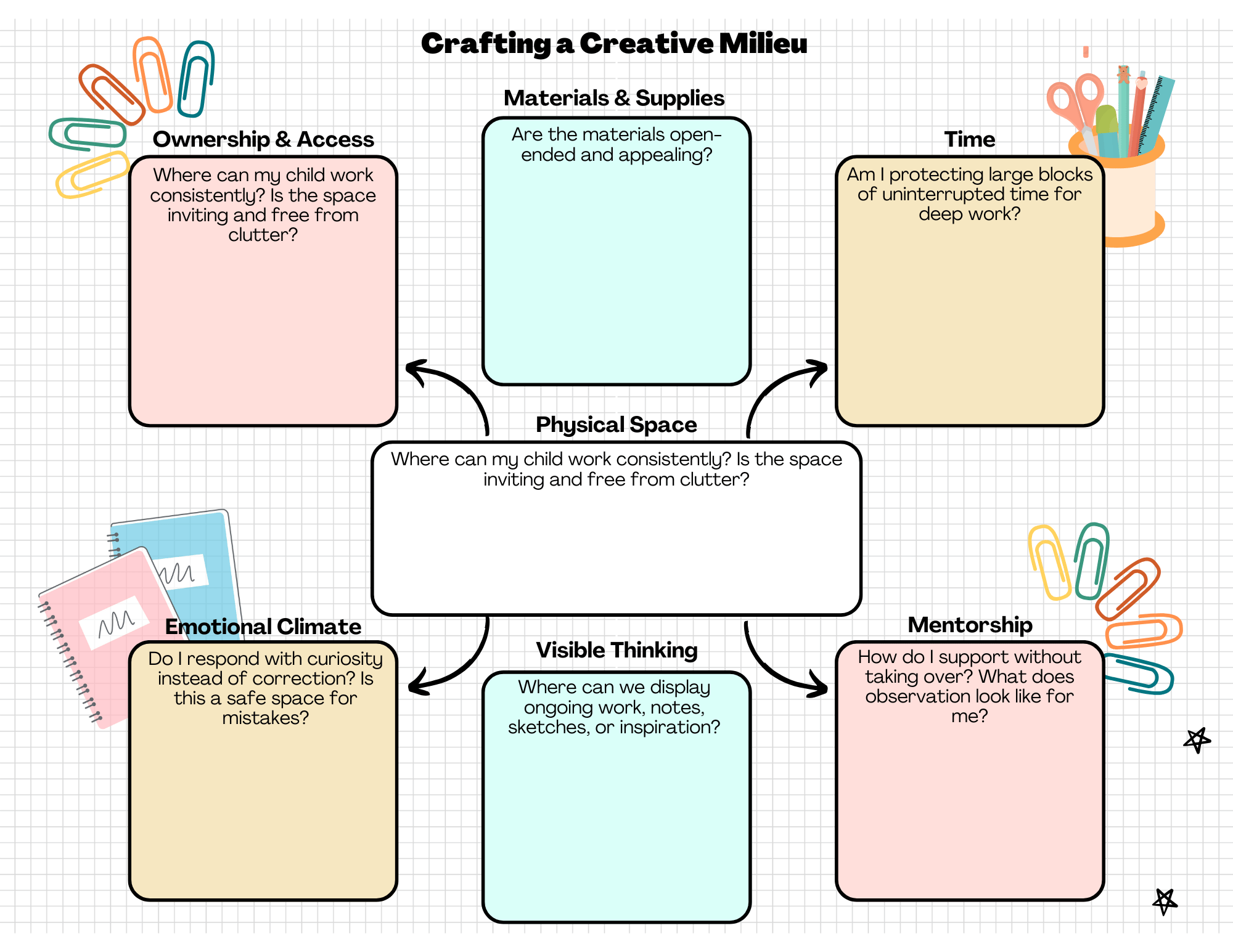Project-Based Learning at Home: How to Foster a Creative Milieu for Your Homeschooler
Inspired by Lori Pickert’s “Project-Based Homeschooling: Mentoring Self-Directed Learners”
“There are two aspects of providing occasions for wonderful ideas. One is being prepared to accept children's ideas. The other is providing a setting which suggests wonderful ideas to children.”
— Eleanor Duckworth
This quote opens Lori Pickert’s Project-Based Homeschooling: Mentoring Self-Directed Learners and sets the tone for everything that follows. It is both a reminder and a challenge: to create not just space, but the right kind of space for learning to flourish. I am in the process of re-vamping our homeschool space for this upcoming year, so the timing of this book for me was just right. Also, my child thrives with project based learning, and especially does well when math is presented in applicable real-life scenarios that are embedded into a larger project. I can’t wait to work Pickert’s methodologies into this upcoming year!
First: Who Was Eleanor Duckworth?
Eleanor Duckworth was a cognitive psychologist, Harvard professor, and former student of Jean Piaget. Her work centered around constructivist education, where children actively build their understanding through exploration, dialogue, and deep thinking. She believed that great ideas are born when children are trusted to think for themselves and given environments that invite wonder.
Her words ring especially true for homeschoolers. It is not enough to accept our children’s ideas. We must also create a home learning environment that inspires them.
Project-Based Homeschooling: A Quick Overview
In Project-Based Homeschooling, Lori Pickert offers a framework for nurturing independent thinkers. Her approach centers on long-term, child-led projects that grow out of a child’s genuine interests. These projects evolve over time through research, building, questioning, experimenting, and documenting. The adult acts as a mentor, not a teacher, offering support, gathering resources, and helping the child reflect without directing the process.
Rather than offering a program or checklist, Pickert encourages parents to trust the process, honor their child’s curiosity, and provide the right conditions for meaningful work.
The Power of the Learning Environment
One of the most powerful takeaways from Pickert’s work is the role the environment plays in learning. She emphasizes the importance of having a dedicated workspace and access to quality materials. A child needs a consistent place where they can return to their ideas and engage in deep, creative thinking.
As a former classroom teacher with a background in education, I often use the word milieu to describe this environment. A child’s milieu is the atmosphere surrounding their learning. It includes the physical setup, emotional tone, available resources, and even the presence of unstructured time. When we shape the milieu with intention, we create a setting that suggests wonderful ideas to children, just as Duckworth described.
What Makes a Creative Milieu?
A creative milieu does not need to be elaborate. It needs to be thoughtful. Here are some elements to consider:
Physical Space
Designate a consistent area for creative work. It can be a table, a corner, or a moveable cart. What matters is that your child knows this space belongs to their ideas.Ownership and Access
Make sure your child can access materials on their own. Independence is a key component of self-directed learning.Quality Materials
Children notice when tools are real and meaningful. Open-ended, well-made materials inspire deeper work than disposable or pre-packaged ones.Time
Creative work takes time. Protect large, uninterrupted blocks where your child can explore and get lost in thought.Emotional Climate
Let your child feel safe to make mistakes, get stuck, and try again. Your responses should invite reflection, not correction.Visible Thinking
Give projects a place to live. Ongoing work, sketches, and questions should be easy to see and return to.Mentorship
Stay nearby, observe, and ask thoughtful questions. Support your child without solving everything for them.Documentation
Use journals, photos, or voice memos to capture the journey. Documentation helps children reflect on what they’ve done and where they want to go next. Not to through in a product here… but this is how I use our homeschool portfolio.
Free Resource: Crafting a Creative Milieu
To help you bring these ideas to life, I’ve created a free printable graphic organizer: Crafting a Creative Milieu. It offers reflective questions and space to plan how you can build a supportive learning atmosphere at home.
Download it here and revisit it throughout the year to see how your homeschool environment grows alongside your child.











